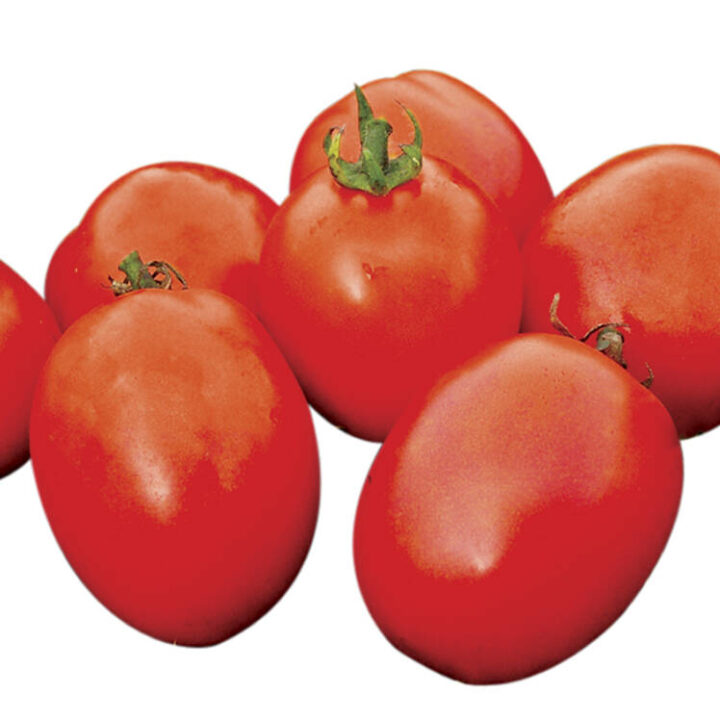Last updated on August 1, 2025
As an agriculture professional in Nigeria, the Platinum F1 tomato yield potential is vital for farmers to optimize harvests and profitability. This guide provides expert insights into Platinum F1 tomatoes’ capacity in Nigeria. We’ll explore realistic yield per plant and per acre, production factors, and practical strategies to maximize your Platinum F1 tomato harvest in Nigeria. Learn more about starting a profitable tomato farm in Nigeria.
What Does Platinum F1 Tomato Yield Per Plant in Nigeria?
Platinum F1 tomato yield per plant in Nigeria is significant. These tomatoes are bred for success in challenging tropical environments. What can you realistically expect from an individual plant?
The “Per Plant” Blueprint: What is Individual Platinum F1 Tomato Production
A healthy, well-managed Platinum F1 tomato plant in Nigeria can realistically produce 2 to 4 kilograms of fruit. This high-performing determinate variety is bred for success in tropical environments, with each oval-shaped, bright red fruit typically weighing 70 to 80 grams [Source: East-West Seed, Platinum F1 Archives]. Achieving this yield depends on plant health, effective fruit setting, and nutrient management.
Scaling Up Success: What About Platinum F1 Tomato Production Per Acre/Hectare in Nigeria?
- In Nigeria, a typical Platinum F1 tomato yield per acre for experienced farmers is around 15 tonnes.
- However, with optimal agronomic practices, dedicated farmers can consistently achieve 20 to 25 tonnes per acre, or even higher.
- This means a hectare (approximately 2.47 acres) could potentially yield over 50 tonnes of Platinum F1 tomatoes.
- This high expected yield Platinum F1 tomato positions it among the high-yielding tomato varieties Nigeria needs. Adopting strategies like precise planting density and optimized irrigation directly impacts these large-scale successes.
Expected Yields: At a Glance
| Metric | Typical Yield | Potential High Yield |
| Per Plant | 2-4 kg | 4+ kg |
| Per Acre | 15 tonnes | 20-25+ tonnes |
Platinum F1 Tomato Yield & Profit Estimator
Estimate your Platinum F1 tomato harvest and potential profitability based on your farm’s practices.
Farm & Plant Details
Typical density for tomatoes. Adjust based on your spacing.
Platinum F1 typically yields 2-4 kg/plant. This value will be adjusted by management factors.
Management Practices (Impact on Yield)
Platinum F1 performs well in both dry and rainy seasons.
Financial Details
(e.g., $0.50/kg or NGN 500/kg)
Includes labor, fertilizers, pesticides, water, etc. (per acre/hectare).
Your Estimated Results
These are estimates. Actual results depend on specific farm conditions, market dynamics, and unforeseen factors.
Why Platinum F1 is a Game-Changer: Characteristics Boosting Your Yield

Platinum F1 tomato characteristics are engineered for abundant production, particularly in Nigeria’s unique climate. This variety is meticulously developed for resilience and productivity.
Built for the Tropics: Inherent Vigor and Adaptability
Platinum F1’s inherent vigor means the plant is strong and robust, leading to heavy fruit production. This variety demonstrates excellent tolerance to Nigeria’s heat and humidity.
- It manages high temperatures and moist air common in Nigeria, continuing to set fruit where others falter.
- This adaptability ensures strong Platinum F1 rainy season performance and equally strong Platinum F1 dry season performance.
- Its fruit cracking tolerance minimizes losses during the rainy season, while its ability to set fruit in hot conditions secures harvests during dry periods. This dual-season capability is a major advantage for consistent production in Nigeria.
The Shield: Platinum F1 Tomato Disease Resistance – Protecting Your Harvest
Platinum F1 offers strong defense against crop diseases, making Platinum F1 tomato disease resistance crucial for maintaining high yields and protecting your harvest from prevalent diseases in Nigeria. This variety offers particular tolerance and resistance to:
- Bacterial Wilt (BW): A notorious threat. Platinum F1’s resistance is significant, especially in southern Nigeria where this disease is common.
- Tomato Mosaic Virus (ToMV): A widespread viral disease that stunts growth and deforms fruit.
- Tomato Yellow Leaf Curl Virus (TYLCV): A viral menace active in the dry season, causing leaf curling and reduced yields.
By minimizing these threats, Platinum F1 plants remain healthy and productive. This resistance reduces chemical use, prevents losses, and increases Platinum F1 tomato yield per plant.
Market Ready: Desirable Fruit Quality and Strong Demand
High yield is valuable only if the market accepts your produce. Platinum F1 tomatoes meet Nigerian consumer preferences.
- Their fruits are oval-shaped, firm, and bright red.
- This consistent quality ensures high market acceptance, especially during lean seasons when prices often peak.
- Additionally, their good cracking tolerance is a major advantage. This reduces post-harvest losses from damaged fruits, increasing marketable yield and price.
- The strong market demand for Platinum F1 directly translates high yields into tangible profit.
Maximizing Your Platinum F1 Tomato Yield Per Plant in Nigeria: Best Practices
Platinum F1 has significant potential. Achieving this requires implementing the right growing Platinum F1 tomatoes in Nigeria. These proven methods boost your Platinum F1 tomato production per acre.
Setting the Stage: Site Selection and Soil Preparation for Optimal Yield
A proper foundation is crucial before planting.
- First, select a site with ample sunshine. Tomatoes require at least 6-8 hours of direct sunlight daily.
- Good drainage is essential; soggy roots are detrimental.
- Conduct a soil analysis. This provides crucial information on nutrient content and pH levels for your Platinum F1 plants. Optimal pH for tomatoes is typically 6.0 to 6.8.
- Based on test results, apply essential soil amendments. Organic matter, like well-rotted manure or compost, significantly improves soil structure and fertility. Healthy soil underpins high tomato yield per plant Nigeria.
Nurturing the Future: Planting and Nursery Management for a Strong Start
Achieving a high Platinum F1 tomato yield per plant begins with quality seeds.
- Always source high-quality seeds from reputable suppliers, such as East West Seeds Platinum F1 yield varieties. Quality seeds are foundational for healthy plants.
- Effective nursery practices are vital. Using seed trays with sterile growing medium provides a clean, disease-free environment for seedlings.
- Ensure proper spacing to avoid overcrowding, which can hinder growth.
- Implement seedling hardening by gradually exposing young plants to outdoor conditions before transplanting. This minimizes transplant shock, ensuring strong initial growth in the field.
Cultivating Greatness: Crucial Agronomic Practices for Sustained High Yields
Once transplanted, consistent care maximizes your expected yield Platinum F1 tomato.
- Water Management: Consistent Irrigation for Optimal Yield Consistent irrigation is vital for lush tomato growth, especially during flowering and fruiting. Drip irrigation systems in Nigeria are highly recommended for optimal yield. They deliver water directly to plant roots, minimizing waste and ensuring efficient nutrient uptake. This can increase tomato yield by 150-200% compared to rain-fed farming. This precise watering directly impacts your Platinum 701 F1 tomato yield per plant.
- Nutrient Management: Fueling Your Platinum F1 Plants Plants require proper nutrition. Based on soil analysis, develop a fertilization schedule. Tomatoes need a balanced NPK blend, varying with growth stage. Phosphorus-rich fertilizers, for example, support early root development. Micronutrients are also crucial for plant health, ensuring optimal function for a high Platinum F1 tomato yield per plant. Find the best fertilizer for tomatoes in Nigeria.
- Pest and Disease Monitoring and Control: Safeguarding Your Investment Despite Platinum F1’s resistance, vigilance is key. Regularly inspect plants for pests or diseases; early detection is critical. Implement integrated pest management (IPM) strategies, combining cultural practices, biological controls, and chemical use when necessary. This proactive approach prevents setbacks to your Platinum F1 tomato harvest in Nigeria.
- Plant Support: Providing Necessary Support for Growth Vigorous, high-yielding Platinum F1 plants require support. Staking or caging is essential. This keeps fruits off the ground, reducing rot and improving air circulation, which helps prevent diseases. It also simplifies harvesting.
- Pruning and Training: Directing Energy for More Fruit Strategic pruning significantly enhances your Platinum F1 tomato yield per plant. Removing suckers (side shoots) directs energy towards fruit production. Training plants along stakes or lines improves light penetration and airflow, reducing disease risk and contributing to larger, healthier fruits.
Overcoming Challenges: Common Pain Points and Solutions for Platinum F1 Tomato Farming in Nigeria
Tomato farming in Nigeria presents hurdles. Platinum F1 helps manage many common pain points. Let’s address typical challenges and provide solutions to protect your Platinum F1 tomato production per acre.
Taming the Elements: Managing Environmental Stressors
Nigeria’s climate, though favorable for Platinum F1, still poses challenges.
- Extreme heat and humidity are common. During peak heat, consider shade nets to protect young plants from scorching sun and reduce water evaporation.
- Proper spacing improves air circulation, managing humidity and creating a thriving microclimate for your plants.
- The rainy season can lead to fungal diseases despite Platinum F1’s cracking tolerance. Ensure proper drainage; raised beds can help mitigate these issues.
- For the dry season, efficient water usage is paramount. Drip irrigation is highly effective. Applying mulch around plants helps retain soil moisture, conserving water and reducing stress. This also aids in growing tomatoes faster.
Staying Ahead: Effective Pest and Disease Management
Platinum F1 offers strong resistance, yet no plant is completely immune. Occasionally, intervention may be necessary.
- Early detection is crucial. Regularly scout your farm.
- Knowing common tomato pests and diseases in Nigeria is vital. Look for discoloration, wilting, or unusual spots.
- If an issue arises, prioritize sustainable solutions. Biological controls, such as beneficial insects, can be effective.
- For severe outbreaks, consult a local agricultural extension agent or expert for the best economic and effective pesticide or fungicide. Targeted intervention is more effective than broad applications for your plants and profitability.
From Farm to Fortune: Market Access and Profitability
High Platinum F1 tomato yield in Nigeria needs market access for good tomato farming profit in Nigeria. Connect high yield with consistent market demand. I’ve observed farmers with great harvests struggling due to a lack of market strategy.
- First, understand local market pricing and seasonal fluctuations, identifying periods of higher prices to strategically time your planting. Timing your planting is essential.
- Building relationships with local buyers, wholesalers, or direct consumers ensures a steady off-take for your produce.
- Post-harvest losses can reach 50% in Nigeria without proper management. Therefore, proper handling and storage are crucial to maintaining the quality and value of your high-yielding Platinum F1 tomatoes.
- Effective management of these aspects translates potential yields into actual profitability. For more in-depth advice, explore how to become a successful tomato farmer.
Conclusion: Achieving Success with Platinum F1 Tomatoes in Nigeria
The question of how much Platinum F1 tomato yields per plant in Nigeria emphasizes a comprehensive approach. Individual Platinum F1 plants can yield 2 to 4 kilograms of fruit. A well-managed farm can achieve 15 to 25 tonnes per acre or more. This is a testament to the variety’s vigor, Platinum F1 tomato disease resistance, and adaptability to the Nigerian climate.
Achieving these impressive Platinum F1 tomato harvest in Nigeria numbers requires diligence. This includes thorough soil preparation, quality seed selection, and consistent water and nutrient management. While environmental stressors and pests are challenges, the right strategies lead to success. The future of tomato farming profit in Nigeria is bright with the Platinum F1 variety.
What’s the Real Deal? Platinum F1 and Your Farming Profitability
Regarding profitability, tomato farming profit in Nigeria with Platinum F1 can be substantial.
- Harvesting up to 25 tonnes per acre provides a significant volume of produce for the market.
- Consider Mr. Tony, who achieved a 16-tonne-per-acre yield with Platinum F1, generating up to six times his investment! [Source: Veggie Grow, Platinum F1 Tomato Seed – review].
- While initial investments in quality seeds and drip irrigation are required, the increased Platinum F1 tomato yield and reduced losses from disease resistance often quickly offset these costs.
- Strong market demand for firm, high-quality Platinum F1 tomatoes helps maintain favorable prices.
- Therefore, applying these best practices makes the financial rewards from maximizing Platinum F1 tomato yield attainable. It’s a strategic investment in your agricultural future.
Looking Ahead: The Bright Future of Platinum F1 in Nigerian Agriculture
Platinum F1 is a key player in enhancing food security and farmer livelihoods in Nigeria.
- Its remarkable traits, including robust Platinum F1 rainy season performance and Platinum F1 dry season performance, make it ideal for year-round cultivation across various regions.
- This consistent yield provides stable income for farmers.
- With ongoing agricultural research and improved access to best practices, higher average yields from Platinum 701 F1 tomato yield per plant are expected.
- Innovations in precision farming, such as advanced nutrient delivery and smart pest monitoring, will further enhance this hybrid’s advantages, boosting its positive impact on farming communities.
Real-World Success Stories: Practical Insights from Nigerian Farms
Real-world examples illustrate Platinum F1’s performance on Nigerian farms. I’ve gathered compelling insights on its on-the-ground success stories.
The Power of Early Detection in Action
I recall a farmer in Oyo State, Mr. Ade, who initially faced a creeping leaf spot issue. Though not a major disease Platinum F1 fully resists, it was impacting his Platinum F1 tomato yield. Instead of waiting for it to spread, he diligently checked his plants daily. Upon noticing suspicious spots, he promptly consulted an agricultural extension worker. The fungal attack was confirmed early. By immediately applying an organic fungicide only to affected plants and improving air circulation through strategic pruning, he contained the problem. His Platinum F1 tomato harvest in Nigeria remained largely unaffected, underscoring the value of proactive monitoring.
Timing is Everything: Capitalizing on Market Fluctuations
Another memorable case involves a group of farmers in Kano. They strategically planted Platinum F1 seeds to mature just before the typical “lean season” (May-July), when tomato supply usually drops. They leveraged Platinum F1’s excellent Platinum F1 dry season performance for off-season cultivation. While many farmers avoid dry season farming due to water challenges, this group invested in a communal borehole and shared drip irrigation. Their Platinum F1 tomato production per acre during this period, combined with higher market prices due to scarcity, resulted in significantly better returns than their wet season crops. This exemplifies how smart planning directly increases tomato farming profit in Nigeria.
The Magic of Soil Amendments
I once advised a farmer in Ogun State whose soil test revealed a significant phosphorus deficiency. His Platinum F1 plants grew, but fruit set was sparse, directly impacting his Platinum F1 tomato yield per plant. We implemented a targeted fertilization plan: incorporating a phosphorus-rich organic amendment before transplanting, alongside balanced NPK application during growth. The results were remarkable. Plants developed stronger root systems, consequently producing a much higher number of well-formed, firm fruits. This anecdote highlights how understanding your soil and providing precise nutrients dramatically boosts your expected yield Platinum F1 tomato.
These real-world examples, from Nigerian farms, illustrate that Platinum F1 is an exceptional variety. Its true potential is unlocked through informed decisions and consistent application of best practices. It’s about combining the right genetics with smart, adaptive farming.
Frequently Asked Questions (FAQs) About Platinum F1 Tomato Yield
Here are some common questions farmers ask about Platinum F1 tomato yield in Nigeria:
Q1: What is the typical yield of a single Platinum F1 tomato plant in Nigeria?
A single, healthy Platinum F1 tomato plant in Nigeria can typically yield 2 to 4 kilograms of fruit. This is influenced by proper plant care and optimal growing conditions.
Q2: How much Platinum F1 tomato can one acre produce in Nigeria?
Experienced farmers in Nigeria often achieve a Platinum F1 tomato yield per acre of around 15 tonnes. With excellent agronomic practices, yields can increase to 20-25 tonnes per acre or more.
Q3: Is Platinum F1 suitable for both rainy and dry seasons in Nigeria?
Yes, Platinum F1 exhibits strong Platinum F1 rainy season performance and Platinum F1 dry season performance. Its adaptability and fruit cracking tolerance make it well-suited for year-long cultivation in Nigeria.
Q4: What are the main diseases Platinum F1 tomatoes are resistant to in Nigeria?
Platinum F1 offers significant Platinum F1 tomato disease resistance to common threats like Bacterial Wilt (BW), Tomato Mosaic Virus (ToMV), and Tomato Yellow Leaf Curl Virus (TYLCV). This resistance helps protect your Platinum F1 tomato harvest in Nigeria.
Q5: What are the key practices to maximize Platinum F1 tomato yield?
To maximize Platinum F1 tomato yield, focus on proper site selection, soil analysis, quality seed sourcing (like East West Seeds Platinum F1 yield varieties), consistent drip irrigation, balanced nutrient management, proactive pest and disease control, and essential plant support (staking/pruning).
Q6: Can growing Platinum F1 tomatoes be profitable in Nigeria?
Yes, tomato farming profit in Nigeria with Platinum F1 can be substantial due to its high yield potential and market demand for its quality fruits. Strategic cultivation and market timing can lead to significant returns on investment.
I truly hope this guide has given you a clearer picture and actionable insights. What are your thoughts? Have you had experiences with Platinum F1 or other high-yielding tomato varieties Nigeria has to offer? I’d love to hear your stories or answer any further questions you might have. Let’s keep the conversation going!


